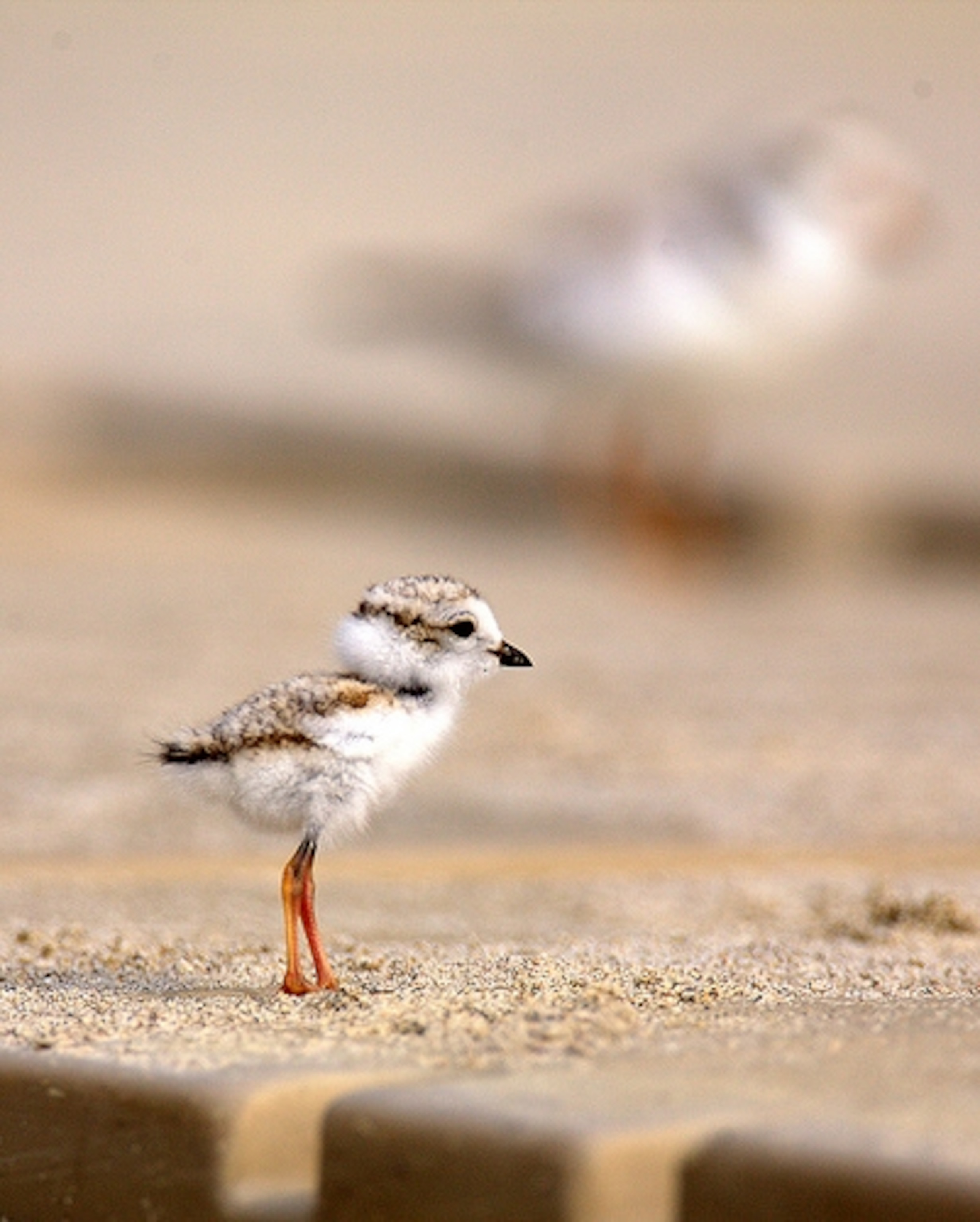
Save a Bird, Kill an Island?
IT friend Roger Hamilton just returned from a trip to North Carolina’s Outer Banks, where a battle between birds and beachgoers is brewing…
Driving down Highway 12 on North Carolina’s Outer Banks, I sense that something is wrong. “Save a bird, kill an island,” someone had scrawled across an SUV rear window. “Piping plover tastes like chix,” advertises a restaurant on its menu marquee.
Pretty strong stuff. Better find out what’s up.
My first stop was the legendary Red Drum Tackle Shop, in the village of Buxton. “They” have closed down miles of beaches to off-road vehicles and everything else, says Bob, the owner. All for the sake of three little birds: the piping plover (pictured, above), the least tern, and the American oystercatcher. “They” are conservation groups, a U.S. district judge, and the National Park Service. The conservationists contend that people and vehicles on the beaches prevent the birds from nesting.
“Ridiculous,” Bob scoffs. “You know where the biggest least tern nesting sites are on the Outer Banks? On the roofs of three Food Lion super markets.
“And they closed off the Point,” he explodes. He means Cape Point, one of North America’s legendary fishing holes, which is normally lined with ORVs laden with rods and coolers, and friendly people—no matter that many miles of other beaches remain open. For a 4×4 fisherman, it’s like going to New York City and being told to forget the Empire State Building because endangered pigeons are nesting on the 96th floor.
“Visitors are staying away; businesses are going bankrupt,” Bob says.
I decide that a full-blown environmental controversy is a lot more interesting than roasting on a beach, so I head off to a refuge and come across a birdwatcher named Anna. She has heard stories of baby plovers falling into tire ruts and not being able to escape. I squint and imagine a big F-250, headed right for the little ball of fluff. The rod rack on the pickup’s front bumper bristles with black graphite shafts bearing names like “Slammer,” “Striker,” “Eliminator,” and “Ugly Stik.”
Next I go to the visitors center at Cape Hatteras Lighthouse.
“How does it feel to be a public enemy?” I ask a park ranger. “Awful,” replies the young woman. Even the birds are a headache. When they move their nests, her colleagues have to rope off yet another 300-yard buffer.
My week is over and I stop by the real estate office to hand in my keys. Yes, there’s a lot of anger, says Kim. But the Outer Banks has seen many conservation battles, and in the end, people have learned to live with nature. “As far as I’m concerned,” she says, “if we can save these birds, then let’s do it.”
Read More: Stay apprised of current conservation issues and beach closures at the official website for Cape Hatteras National Seashore. (Daily updates on closures can be requested from Cyndy Holda.) Learn more about the controversy from the Outer Banks Preservation Association and the North Carolina Beach Buggy Association.
- National Geographic Expeditions
What’s your take on the controversy? Let us know in the comments below.
Photo: William Dalton via Flickr
